Nobody gave Sweden a chance at this summer’s Euros prior to the tournament beginning, and even now after topping their group they will likely continue to be underestimated. But the Swedes have been more than defensively solid enough to demonstrate that they could have what it takes to challenge even Europe’s elite at this tournament. Here is our tactical analysis of Sweden at Euro 2020.
system of play: 4-4-2
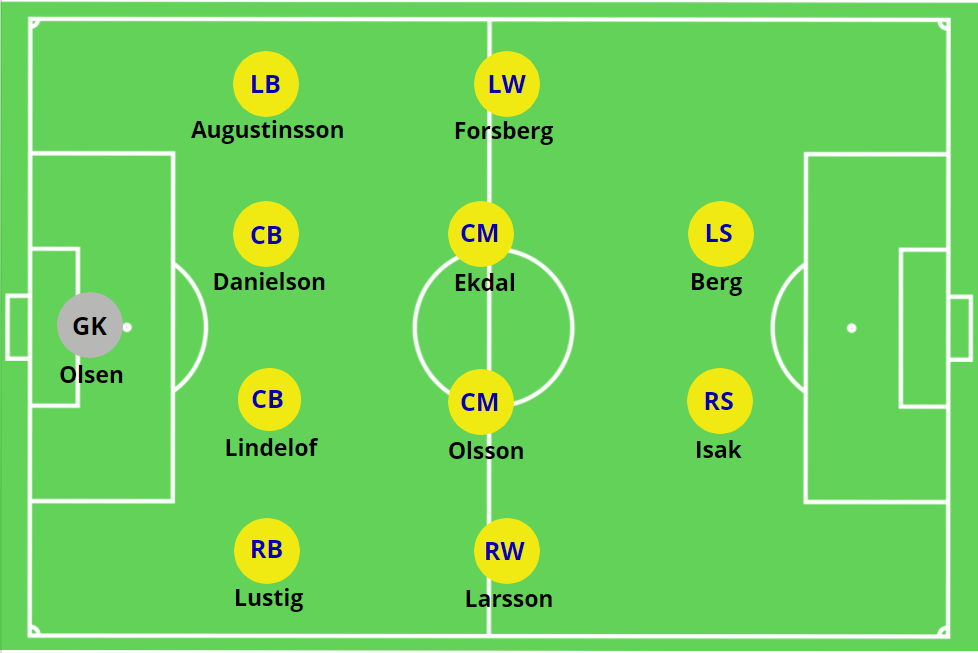
Janne Andersson has utilized a 4-4-2 in all three Euro 2020 matches so far, with inverted wingers in attack giving the shape a much more 4-2-2-2 look. Other than two goals conceded to perhaps the greatest striker in the world, Sweden have done a massive job defensively throughout the Euros and stopped both Spain and Slovakia from finding the back of the net. That defensive resilience has been led by Manchester United defender Victor Lindelof, and Chinese Super League centre-back Marcus Danielson. Robin Olsen’s also performed well in goal, as have the two fullbacks Mikael Lustig and Ludwig Augustinsson. While the midfield is not quite as illustrious it does however incorporate Sweden’s star Emil Forsberg, and veteran midfielder Sebastian Larsson, who’s made over 130 caps for the team. In central midfield, Albin Ekdal and Kristoffer Olsson have started all three games, with the more attack minded Viktor Claesson coming on in all three games to play a role on the wing. Alexander Isak has also been a regular up front, and has been partnered by Dejan Kulusevski, Marcus Berg and Robin Quaison at rotating moments. Other than Forsberg and Lindelof, Sweden lack the type of players that you would normally expect to top their group at the Euros. Despite that, Sweden have performed remarkable feats, coming out on top with a result in all three of their matches.
Their compact 4-4-2 system has been important to those results, inspiring both a solid defense and a charismatic attack. Their style of play within the system also works to suit the needs of players like Forsberg and Isak, which has been a massive help in leading their charge toward the top of Group E.
build-up
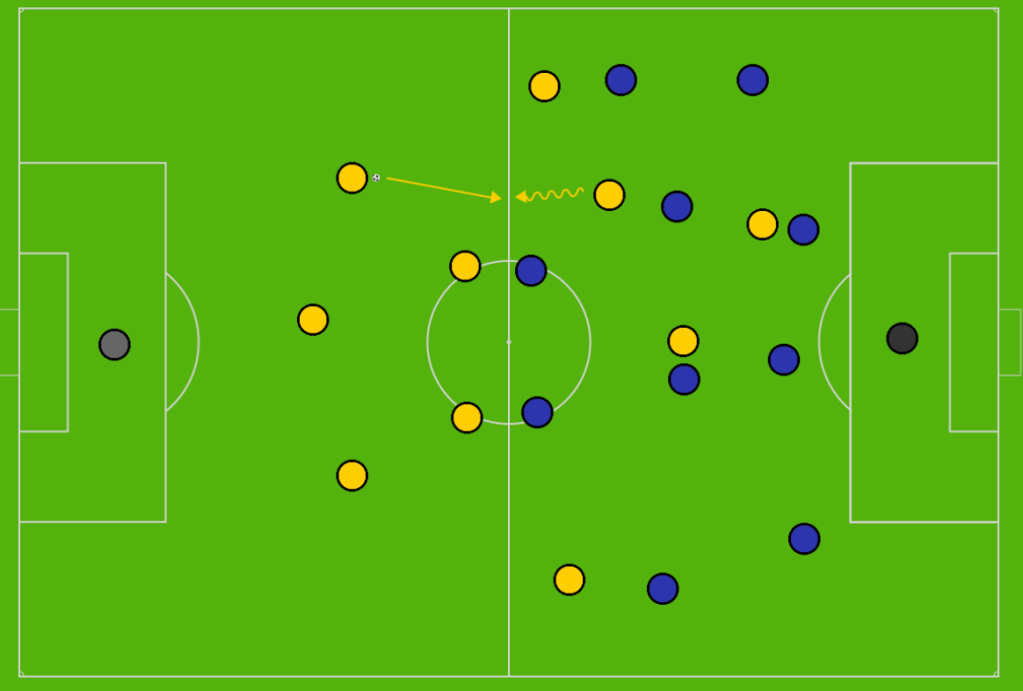
While their defensive stance is pretty standard of a 4-4-2, their build-up is certainly not. Sweden build out from the back using a back-three shape and adapt into a 3-5-1-1, to progress through the lines. Lustig, Lindelof and Danielson make up the back-three, as Augustinsson progresses high and wide on the left. This then allows Emil Forsberg to drift inside, where he will either pick up the ball in between the lines or drop all the way toward his defenders to receive the ball. The two central midfielders will also hang low to attract pressure onto themselves, allowing greater space for Forsberg to receive. Sweden emphasize the left in this build-up strategy, as pictured above.
At times, Lustig will also stay high and wide on the right, allowing Kristoffer Olsson to be part of the back-three instead. But the movement and rotation between Augustinsson and Forsberg always stays the same, as the Leipzig man rarely ever stays wide in these phases. The only other major thing to note about Sweden’s build-up is the occasional movement in deep of the second striker – the one not named Isak. Dejan Kulusevski performed this role in the Round of 16 against Ukraine, but more so to draw players out of position rather than to actually receive the ball. Sweden can keep possession and move the ball around nicely when they want to, they would just rather defend and hit their opposition on the break.
defensive principles
Embed from Getty ImagesWhile Sweden can get forward and strut their stuff, the basis of their group stage triumph has been reliant on their solid defense. Sweden strive to shut up shop and stop teams from progressing through the thirds and breaking lines. Even the strikers have an important role to play when defending, and often stagger themselves to track an opposition number six, without worrying too much about the presence of ball-playing centre-halves.
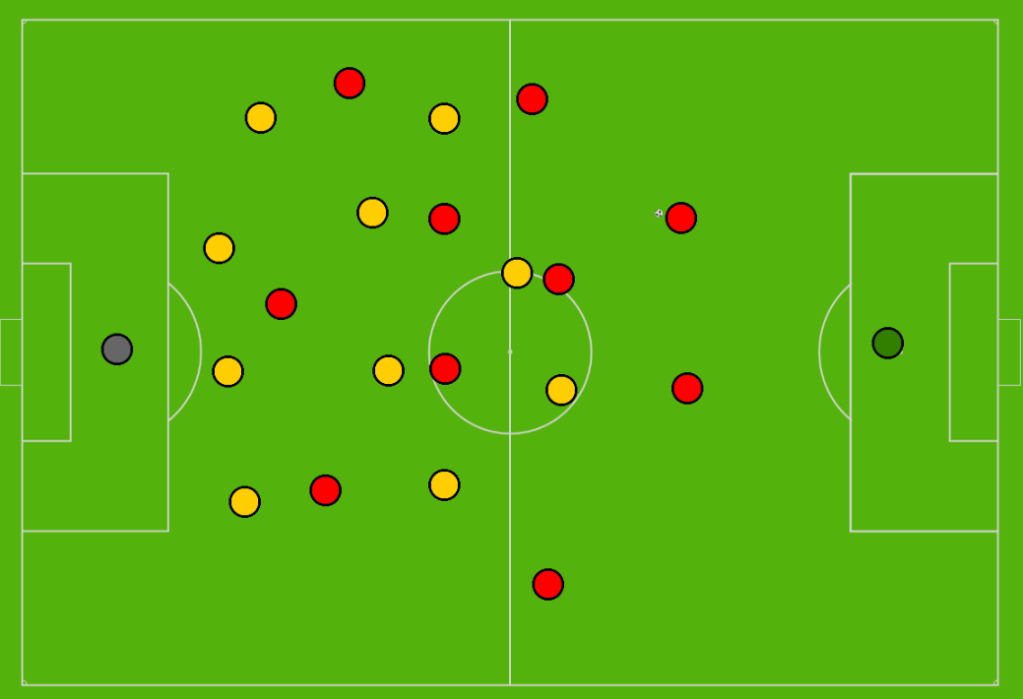
Sweden’s very compact 4-4-2 defense leaves no gaps in central areas for teams to play through, and forces opposition sides to attack around Sweden in the wide areas, and deliver crosses into the box. When we say very compact, we really mean it. If the ball is on one specific side, nearly every single player will also shuffle and position themselves to that side. This includes even far-sided wingers and fullbacks, who look to come to the middle rather than hold their width. On fast switches of play this could be an issue, particularly teams who are good at progressing into the wide areas. But against a team like Spain that were so patient in possession, they were able to shuffle rather seamlessly from side to side.
Embed from Getty ImagesThen within this shape, Sweden are also quite patient in winning the ball back. They look to let their shape do the work, rather than any sort of aggressive pressing to win the ball back on a tackle. In fact no team has completed fewer tackles per game (9.3) than the Swedes. They have however boasted an impressive interception rate of 12 per game, the joint third highest at the tournament, which showcases again the ease at which their shape and shuffling stunts the opposition from progressing vertically. Since teams are often forced wide, Sweden have also conceded the most crosses per game (33). But they’ve matched that wonderfully well, having completed 33.7 clearances per game – the most at the tournament.
Another key tactical note of Sweden’s defense is that their first mechanism for counter-pressing is usually the player that loses possession. If a pass is misplaced by the fullback, it will usually be that fullback who pressures immediately to win the ball back. If the Swedes become unsuccessful at regaining possession, they will resort back into their 4-4-2 shape and shut down the gaps. But their first instinct isn’t just to drop and find their shape again, instead to put pressure on the opposition, and look to win the ball back if they can.
Embed from Getty ImagesAs we progress into the knockout stages, their resilient low-block may mean that opposition teams have better luck breaking them down in transition or set-pieces, where Andersson’s team are given less time to set up. But as far as the group stages go, only Robert Lewandowski’s managed to bag a goal against them…which is a super impressive feat.
attacking principles
Embed from Getty ImagesDespite topping their group, Sweden are by no means a possession-based team. They don’t like to have the ball for very long, and prefer to attack quickly through a very narrow shape. Their wingers will often invert into central areas, and link passes into the penalty area to the two strikers whenever possible.
Embed from Getty ImagesAs the team’s narrowness in defense continues in attack, long balls are a natural fit that help Sweden achieve what they want. They look to engage their attacking players as quickly as they can, and through their narrowness have several options for knock downs and incisive play off the back of these moves. While Sweden had just 15% of the possession against Spain, they had arguably the best chance of the match through this long-passing approach, which eventually set Alexander Isak free on goal. Given that rough start, it’s no surprise then that no team has accumulated less possession at the tournament than Sweden’s shocking 35%. Despite that low amount of the ball, they’ve managed to score 4 goals in 3 games – a testament to their ability to create chances and then take them.
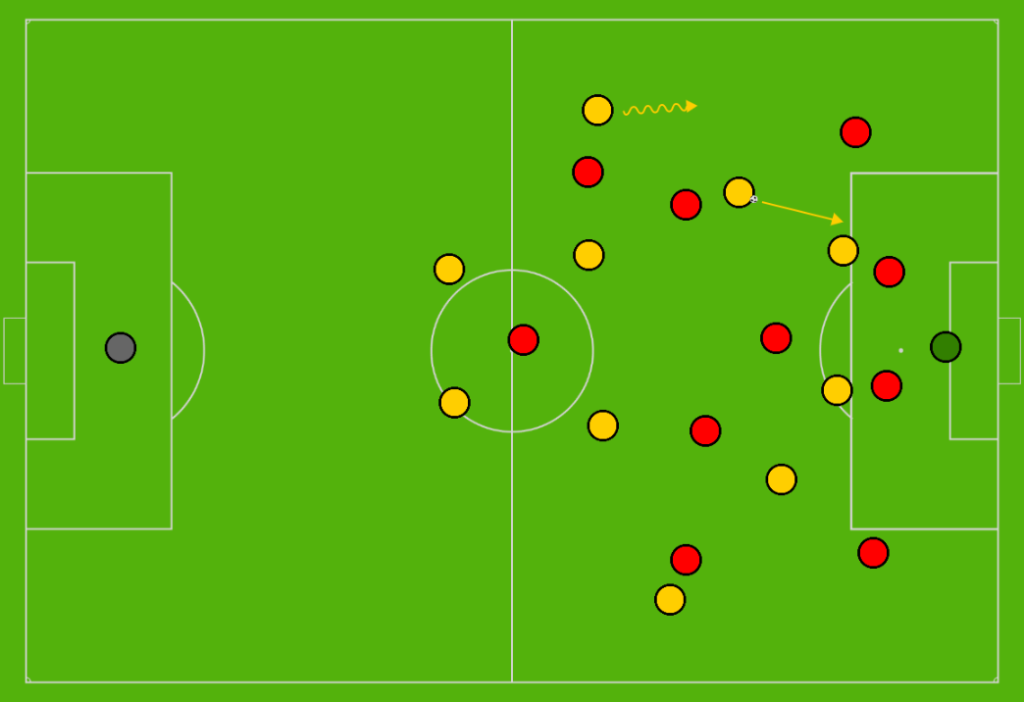
In Emil Forsberg and Seb Larsson, Andersson’s team have two outstanding set-piece deliverers who can then also naturally cross the ball to great effect. Operating in very inverted roles, the fullbacks also often advance into attacking positions to deliver balls into the box themselves and provide some width in an otherwise narrow team. In Dejan Kulusevski the Swedes also have a player with incredible dribbling and running power, which is a massive weapon for them to have as we progress into the Round of 16. They can play long passes into their big, tall strikers all they want, but if they’re having trouble breaking opposition sides down having a player like Kulusevski who can dribble past opponents will also be key. Finally, Alexander Isak has impressed throughout the tournament so far despite not scoring. At 6’4, his footwork and ability on the ball is quite remarkable. It gives him the ability to completely hold off opposition defenders and use his size and strength, while still retaining the ball and getting shots off from difficult situations. Thankfully Sweden haven’t needed his goals to progress, as the likes of Emil Forsberg have stepped up from that front instead.
Embed from Getty ImagesStatistically, their approach is also quite evident. They’ve won the fifth most amount of aerial duels at the tournament (18.7), many of which are won in attack by the front-two on long passes forward. Through these long, risky passes, Sweden have accumulated the worst passing percentage (70%) at the tournament, which is 5% worse than second to bottom Czech Republic. Despite that, their 9.3 shots per game tells a very different story, which plays into the fact that they play into the strengths of their players and look to take chances when they come along. Wasting no time at all in attack has been a significant strength for the Swedes, again having the best chance against Spain despite holding just 15% of the ball.
conclusion
Embed from Getty ImagesSweden have not been one of the most brilliant teams at this summer’s Euros, and topping their group is perhaps in equal part a failure of the other three nations. However, topping a group that many might have pegged them to finish bottom of is still an impressive achievement. Through a very succinct style of play involving narrowness in both attack and defense, Sweden have achieved more than the sum of their parts. They now head into the Round of 16 full of confidence, having only conceded goals to the world’s best striker. How far Sweden can go remains to be seen, but they should be commended for a formidable unbeaten run at the Group Stages of Euro 2020.
So there it is! A tactical analysis of Sweden at this summer’s European Championships. Be sure to check out more of our Tactical Analyses, and follow on Twitter @mastermindsite to never miss an update. Also check out our subscription options if you enjoy this type of content, and keep an eye out for more great Euro 2020 content. Thanks for reading and see you soon!
You might also enjoy…
How I created a football tactics empire
In 2016, I started TheMastermindSite.com as a passion project, writing about whatever interested me at the time. Five hundred articles and five years of coaching experience later, I had created one of the biggest platforms in the tactics/analysis space, certainly by a sole proprietor. Now going on 1,200 articles, I deep-dive into how I created…
Game of Numbers #37 – Forge FC’s use of centre-backs in midfield like Manchester City
For the unfamiliar, Forge FC are the Manchester City of the Canadian Premier League. They play a possession-based 4-3-3, stacked with ball-savvy savants, and a culture that embodies winning. The Canadian Premier League’s been around since 2019 now. Forge have won the Playoffs in four of the five seasons, and lost the final in the…
Enzo Maresca – Leicester City – Tactical Analysis
It has been a season to remember for Leicester City inside the Championship. They’ve been one of the league’s all-time top sides, and look fully prepared to hit the mark if they can keep hold of their star power leading into next season. Enzo Maresca and his team have done a brilliant job in assembling…
Why centre-backs are becoming fullbacks: The tactical trend that defined 2023
It might be wrong to credit this tactical approach to Pep Guardiola. After all, the origin story to the ‘fullback’ is because the defender was fully back. However, in operating with a centre-back that steps up into midfield, Guardiola also created a construction within his team that regularly positioned centre-backs out wide. From then on,…
Unai Emery – Aston Villa – Tactical Analysis (2023-24 Edition)
Just shy of the halfway mark inside the 2023-24 Premier League campaign, Unai Emery’s Aston Villa have been the surprise package. In with a real shot of the top four, Emery’s Villa are even within touching distance of the Premier League title chase, currently sitting a single point behind Arsenal in the lead. With that,…
Game of Numbers #36 – Role Changes for Dejan Kulusevski & Konrad Laimer
One thing is for certain. Spurs have not been the same since injury to James Maddison. Spurs were flying high with no signs of slowing down at the start of the season. But injuries across the squad have since stunted their progress and made for a more difficult second half of the first half to…
Mauricio Pochettino – Chelsea – Tactical Analysis
Despite all the hype surrounding Mauricio Pochettino’s arrival at Stamford Bridge and a host of new young prospects to excite the fanbase, Chelsea have more or less continued where they left off last season. That is, providing an underwhelming start to the 2023-24 campaign, currently sitting in 12th place. With that, we analyze Mauricio Pochettino’s…
Game of Numbers #35 – Anthony Gordon’s embodiment of the Newcastle way
Newcastle United have been defined in the Eddie Howe era by energy and intensity, including an all-out press, and fervid counter attacking immediately upon regaining possession. Anthony Gordon perfectly embodies the Newcastle way under Eddie Howe, and has been one of the surprise stars of the 2023-24 season. Many scoffed at Chelsea’s interest in the…
Game of Numbers #34 – Dribbling lessons from Jérémy Doku & Midge Purce
Gotham FC finished the 2023 NWSL season in sixth place, narrowly scraping into the playoffs on goal differential over the Orlando Pride. They were far from the favourites to make the playoff final, let alone win the whole thing over a star-studded team like OL Reign. Yet thanks to a double-assist from Midge Purce, the…
Game of Numbers #33 – Nicolas Jackson & the art of extra touches to score goals
Chelsea’s greatest crux over the past few years has been the lack of a goal-scoring centre-forward up front. Nicolas Jackson came into the club this season to not only be their goal-scoring ‘9’, but to be someone that could offer so much more in producing for others in Pochettino’s system. He’s delivered on both fronts…
Game of Numbers #31 – Scoring goals from central midfield like Scott McTominay
Throughout his time as a starting character for Manchester United, Scott McTominay repeatedly faced doubt. No one could ever question his heart and desire to play for a club of the stature of Manchester United. But many questioned his ability, and continuously called for the Red Devils to bring new men into their midfield. However,…
Míchel – Girona – Tactical Analysis
After nine games of the 2023-24 La Liga season, Míchel’s Girona have won seven games and lost only to Real Madrid. This puts them second to the current title favourites, and in for the season of a lifetime. Here is our tactical analysis of Míchel’s Girona in 2023-24, and how they’ve put on such stunning…
Game of Numbers #30 – Defending the world’s best striker – Gabriel Magalhães
We all know just how good Erling Haaland is at football. He only needs one chance, and more often than not, he’ll score. But what makes him such a powerhouse is the combination of traits (pace, power, strength, hold-up, playmaking, etc.) that intertwine to make him the most frightening striker in the world. In order…
Game of Numbers #29 – Scoring goals is easy! – Ollie Watkins & Lautaro Martinez
Scoring goals is not always as easy as it looks! The best strikers in the world make it look oh so simple, but like the Wizards of Waverly Place theme song, it’s not what it seems. Yet some players seem to find their way out of any situation. After this weekend’s round of fixtures, I…
Marco Rose – RB Leipzig – Tactical Analysis (2023-24)
RB Leipzig might not go toe-to-toe with Bayern Munich for the Bundesliga title this season, but they have every chance of contending for second place alongside the likes of Dortmund and Leverkusen. Their recruitment over the summer has proven to be spot on, with the central compactions across the pitch aiding their approach of quick…



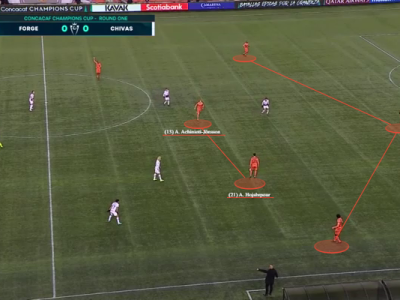




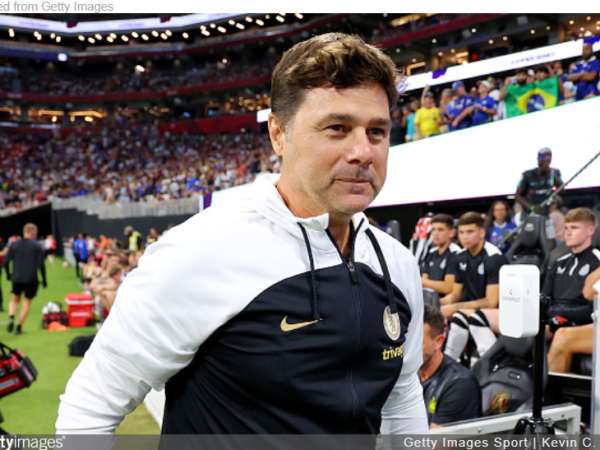


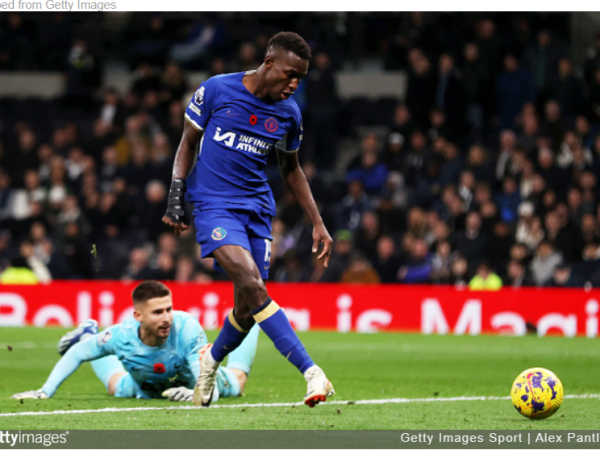





3 thoughts on “Sweden – Euro 2020 – Tactical Analysis”